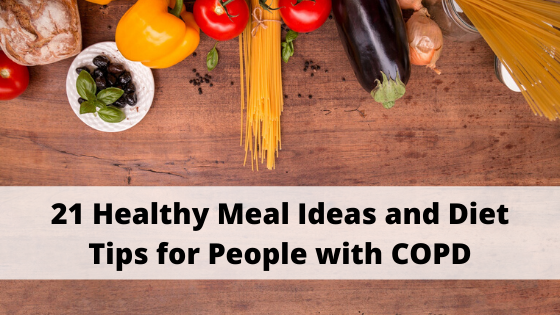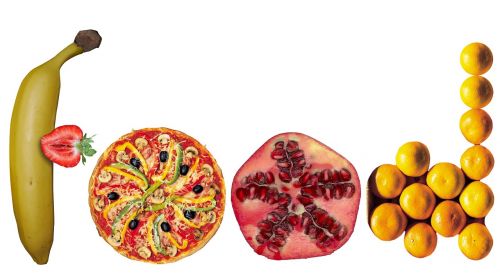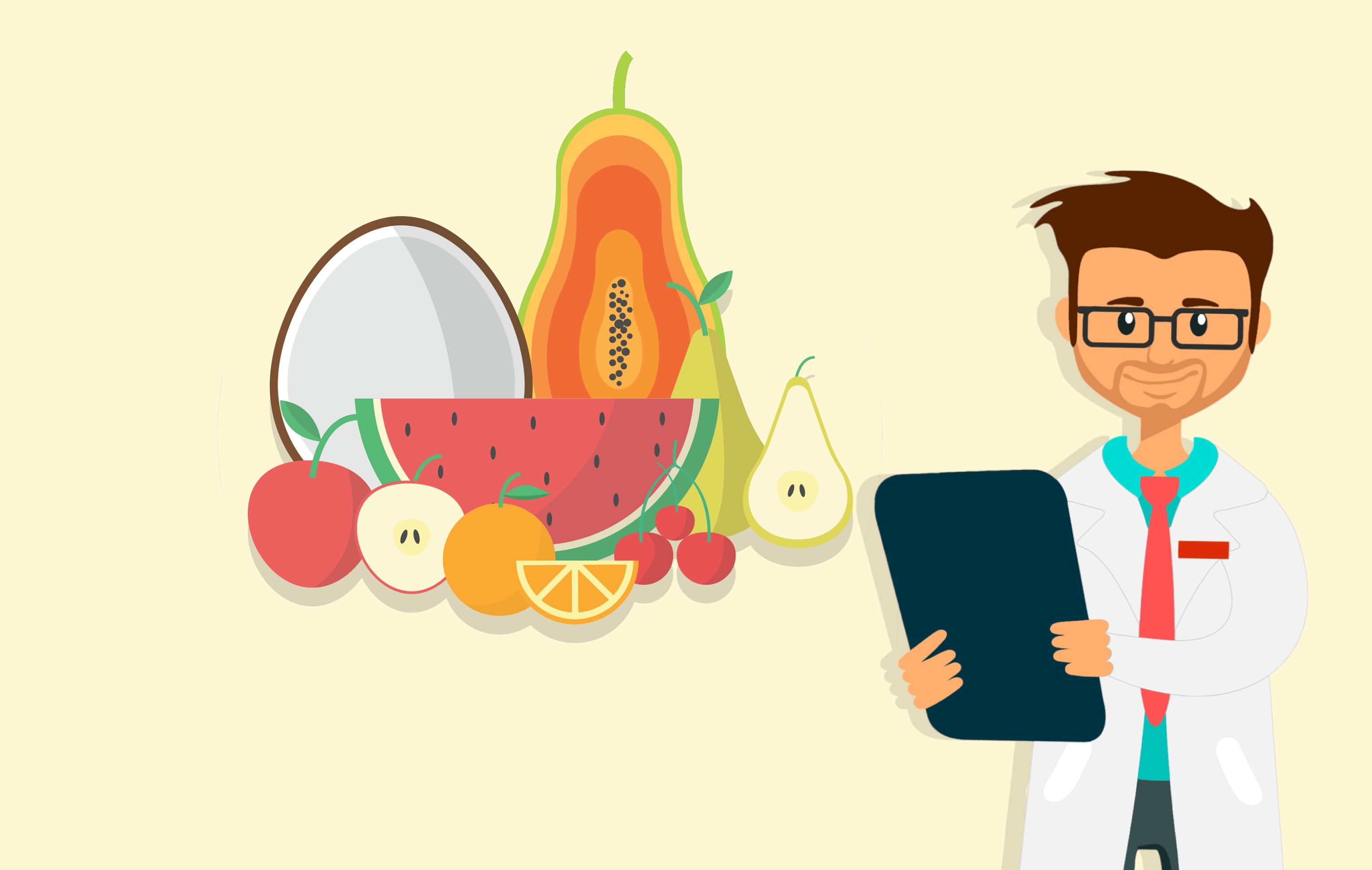
The need for a healthy diet is something that every person shares, young and old, sick and healthy, and everything in between. However, the importance of good nutrition grows as we get older, and it becomes critical for many people living with chronic diseases like COPD.
People with COPD need to be particularly careful to get enough calories and nutrients to support their lungs and other body processes that are affected by the disease. COPD also makes you prone to a variety of diet-related problems, including under-nutrition, weight gain, and weight loss.
However, health and nutrition can get complicated, and sticking to a healthy diet isn't an easy thing to do. If you're like many people, the idea of putting together a healthy, well-balanced meal might feel intimidating, or you might not even quite know where to begin.
That's why we've put together this guide to help people with COPD plan healthy meals and get all the nutrition they need. In this post, we explain not only what a healthy COPD diet looks like, but we also show you how to put together healthy meals on the fly at home.
We also present a variety of practical meal ideas and examples of healthy and versatile dishes you can prepare on your own and modify as you please. These, along with the additional guides and helpful resources linked throughout this guide, should give you everything you need to get started eating a healthier diet that improves—rather than exacerbates—your COPD.
The Cornerstones of Good Nutrition for COPD
Before we start looking at some specific COPD-healthy dishes and meal plans, it's important to have a general grasp of what a healthy diet for someone with COPD looks like. That doesn't mean you have to be a diet guru, but you should know some general principles of nutrition and how to put together a balanced meal.
You should also be aware of the different ways that your diet and eating habits can affect your COPD and worsen symptoms like shortness of breath. We'll address these and a variety of other important dietary considerations in the sections below before we dive into our list of healthy meal examples and some practical diet recommendations for people with COPD.
Balance Your Food Groups (Protein, Fat, & Carbs)

If you look up nutritional guidelines—which you can find online from a variety of government and health organizations—they contain a list of all the vital components that make up a healthy diet. They tell you everything from what categories of food to eat, down to the exact amount of vitamins and minerals you should take in on a daily basis.
Because this information is readily available from lots of great sources, we're not going to go into them in great detail here. However, we do want to highlight some of the most important principles you need to know in order to learn how to create balanced, nutritious meals.
Macronutrient Proportions
First, you should strive for a healthy balance of the three major macronutrients in your diet: proteins, fats, and carbohydrates (also known as carbs). Health experts recommend spreading out your daily calories between these nutrient groups, aiming for the following (approximate) percentages:
- About 20% of your diet should come from protein; high-protein foods include meats, seafood, eggs, beans, peas, nuts, and soy.
- About 30% of your diet should come from fat; this includes fats found naturally in foods like dairy, meat, eggs, and nuts, and also added fats like butter and vegetable oils.
- About 50% of your diet should come from carbs, which are found in a variety of foods including fruits, vegetables, dairy, and grains—however, people with COPD may benefit from a diet with fewer carbs (we discuss this in more detail the next section just below)
Healthy Sources of Nutrients
Second, you should be familiar with which foods from each of these nutrients groups are more or less healthy to eat. Here are a few examples of some healthy vs unhealthy sources of protein, fat, and carbs:
- Whole grain carbohydrates (e.g. whole grain breads and pastas) are healthier than simple, refined grains (e.g. white pastas and breads).
- Lean proteins (e.g. chicken and fish) and unprocessed meats are generally healthier than fatty proteins (e.g. beef and lamb) and processed meats (e.g. sausage, deli meat, and other cured meats).
- Unsaturated fats (e.g. oils and other fats that are liquid at room temperature) are generally healthier for you and your heart than saturated fats (e.g. butter, lard, and other fats that are solid at room temperature).
Major Food Groups and Serving Sizes
Third, you should know what the basic, top-level food groups are and how many portions of each you should eat each day. Keep in mind that what counts as a single portion varies among different types of food within the group.
You can learn more about correct serving sizes on choosemyplate.gov and in the table just below.
Here's an overview of what US guidelines for daily servings say:
|
Food Group |
Daily Amount |
Serving Size |
| Fruits |
1.5 to 2 cups per day |
A1 cup serving of fruit is equivalent to about 1 cup of raw or cooked fruit, 1 cup of 100% fruit juice, or one cup of dried fruit. |
|
Vegetables |
2 to 3 cups per day |
A 1 cup serving of vegetables is equivalent to about 1 cup of raw or cooked vegetables, 1 cup of vegetable juice, or 2 cups of raw leafy greens. |
| Grains |
3 to 8 one ounce equivalents per day, with at least half coming from whole grains |
A 1 oz equivalent of grains is equal to about one slice of bread, one tortilla, 1 cup of dry cereal, or ½ cup of pasta, rice, or oatmeal. |
| Protein |
5.5 to 6 1-oz equivalents per day |
A 1 oz equivalent of protein is equal to about 1 oz of meat,1 egg, ¼ cup cooked beans, 1 tablespoon of peanut butter, ½ oz of nuts and seeds, and 1 oz of meat. |
| Dairy |
3 cups per day |
A 1 cup serving is equivalent to about 1.5 oz of natural cheese, 2 oz of processed cheese, or 1 cup of milk, yogurt, or soymilk. |
|
Oils |
No more than 5 to 7 teaspoons of oil and fats per day |
You can find a helpful table listing the amount of oils and fats in all kinds of common foods on this page from Choose My Plate. |
As you plan your meals and snacks, make it your goal to choose foods that help you fulfill the daily requirements for each food group. You don't have to be perfect, either; approximating your portions and and getting as close as possible to these targets is a perfectly healthy goal.
Foods and Ingredients to Avoid
Finally, you should know what kinds of foods are unhealthy, or unhealthy in large amounts, and do your best to limit them in your diet. These include things like excess sodium, too many simple carbs, added oils, added sugar, and trans-fats.
Foods and Ingredients to Avoid:
- Fried foods
- Heavily processed foods
- Sugary drinks
- Foods high in salt
- Foods high in sugar and simple carbohydrates
- Foods high in saturated fats
- All sources of trans fats
- Foods with added oils and fats
- Too much caffeine
- Too much alcohol
Limit Carbohydrates for Better Breathing
Most people with COPD don't need to follow a special diet, and should be perfectly healthy following the general nutritional guidelines set by the USDA. However, there is one notable exception: some people with COPD may benefit from a diet with fewer carbohydrates.
Because of the nature of how the body processes carbohydrates, eating carbs causes your body to produce more carbon dioxide than when you eat proteins or fats. Because carbon dioxide is a waste product that has to be processed by the lungs, high-carb foods put extra strain on your respiratory system, forcing your lungs to work harder and use up more energy.
If you have COPD, this translates to increased shortness breath, since your damaged lungs are already struggling to process oxygen and carbon dioxide fast enough to meet your body's needs. In fact, studies show that relatively small changes in carbohydrate consumption can have significant effects on COPD symptoms, with more carbs causing notable increases in breathlessness and reduced exercise tolerance.
Because of this, a low-carbohydrate diet can be beneficial for people with COPD, improving their lungs' efficiency and reducing shortness of breath. That means reducing your intake of high-carbohydrate foods (such as grains, beans, and carb-heavy fruits and veggies), and replacing them with low-carb alternatives and more healthy proteins and fats.
You'll find more tips for reducing carbs later on in this guide, both in our sample meal ideas and in our section on practical diet & cooking tips.
Aim for Variety
Although daily diet recommendations can get very specific, that doesn't mean you need to go overboard tracking every little thing, nor do you need to stress about meeting the exact targets every single day. Unless you have specific instructions from a doctor or dietitian, getting the right balance of nutrients on average is perfectly acceptable, and will prevent the vast majority of nutrient deficiencies.
In fact, most people are able to get a sufficient amount (PDF link) of vitamins and nutrients without tracking their diet too closely. That's because, in general, most people eat a wide enough variety of foods to supply their bodies with everything they need.
Of course, this laissez-faire approach won't work if your diet is too unbalanced. If you're not careful, a diet that's too heavy in one thing or too light in another can lead to nutrient deficiencies, which can be particularly dangerous for people with COPD.
An easy way to prevent this, however, is to always strive for variety in your diet. That means not only eating plenty of nutritious foods, but also eating a lot of different kinds of healthy foods with different types of micronutrients, which include vitamins, minerals, and metals like iron and zinc.
It helps to familiarize yourself with the various food sub-categories, which are simply smaller groups within a food group that have similar nutrient profiles. For example, the USDA divides vegetables into 5 separate categories and recommends that you eat a certain amount from each group every week.
Here is a summary of the weekly vegetable sub-group guidelines for adults:
- Dark green vegetables: 1.5 to 2 cups per week
- Red & orange vegetables: 4 to 6 cups per week
- Starchy vegetables: 5 to 6 cups per week
- Beans and Peas: 1 to 2 cups per week
- Other vegetables: 3.5 to 5 cups per week
Knowing these different subgroups makes it easier to ensure that you pick out foods that come from a variety of different groups, instead of just one or two. Maintaining this kind of diversity in your diet will help you ensure that your body gets all the micronutrients it needs to fuel your lungs and keep your body strong.
Here are a couple links to more information about food groups and subgroups:
- A list of all the major food groups and sub-groups with examples of several foods for each category
- A list of common vegetables that belong to each of the 5 major vegetable subgroups
Choose Whole Foods When Possible
When you peruse all the boxed foods, frozen dinners, and other processed foods that make up the large part of grocery store shelves, it's often hard to tell what's good for you and what isn't. Even bold claims like “all natural” or “reduced fat” don't tell you much about a product's actual health, or what those claims even mean in the context of a well-balanced diet.
That's why it's best to cook your own meals at home using whole ingredients whenever possible. That means starting with basic ingredients that are as close as possible to their raw, natural state, such as whole fruits and vegetables, plain beans, and whole grains.
Your ingredients don't need to be “fresh” as long as they're are minimally processed and don't contain added ingredients like salt, oil, or sugar. Frozen fruits and veggies, for example, are just as good for you as the fresh (and more expensive) versions you'll find in the produce section.
Beware of Nutrient Deficiencies Associated with COPD
In ideal conditions, you could get all the nutrients you need just by eating a healthy diet. However, life is often far from ideal, and it's not always possible to get enough vitamins and minerals from the food you eat alone.
This is especially true for people with COPD, who often struggle to get enough nutrients due to both the symptoms and the biological effects of the disease. According to COPD nutrition research, up to 40% of COPD patients are underweight and undernourished.
Certain types of deficiencies are more common in people with COPD than others, including vitamin D, vitamin B12, and iron deficiency. People with disease are also especially prone to osteoporosis, which can be caused by deficiencies in both calcium and vitamin C.
Some of these nutrient deficiencies are directly related to COPD and the medications (such as steroids) used to treat it. Many of them are also associated with certain characteristics that COPD patients tend to have in common, such as age, tobacco smoking history, and other factors related to lifestyle and health.
Research also shows that undernourishment can have particularly severe consequences for people with COPD, including an increased risk of death and hospitalization, more frequent exacerbations. Poor nutrition is also associated with a variety of other negative COPD symptoms, such as reduced lung function, reduced muscle strength, increases shortness of breath, and declines in physical endurance.
Because of this, a large percentage of people with COPD need to take vitamin and/or mineral supplements to satisfy their body's nutritional needs. However, you shouldn't start using supplements without your doctor's permission; when you have a serious chronic condition like COPD, you should never take any new medicines or supplements without consulting your doctor first.
Seeing to your doctor also gives you the opportunity to undergo testing so you can know exactly what—if any—extra nutrients your body needs. Then your doctor can prescribe you the specific supplements you need in proper amounts to correct any deficiencies you currently have or that your doctor believes you are at risk for.
Know Your Calorie Requirements

Many people with COPD struggle with weight loss and undernourishment because of uncomfortable COPD symptoms that make it difficult to eat. However, another reason for malnutrition is simply not eating enough to make up for the extra calories burned through breathing, since lungs affected by COPD use up much more energy to breathe.
This extra energy has to come from somewhere, which is why people with COPD often need more calories and nutrients than the average healthy person. Because of this, many patients—especially those with advanced COPD—need to eat a high-calorie diet to satisfy their body's needs.
That's why, if you have COPD, it's important to talk to your doctor about your diet and to figure out how many daily calories you need to eat. If your doctor puts you on a high-calorie diet, make sure to take it seriously and do your best to meet your calorie target every day.
This can be difficult to do, especially if you're one of the many people with COPD who struggle with pain and breathlessness when you eat. However, there are a variety of strategies that can help, such as eating more frequent, smaller meals spaced out throughout the day (you can find more tips for adjusting to a high-calorie diet toward the end of this guide in the section on practical diet and cooking tips).
Make sure to consult your doctor if you're having trouble managing your diet on your own, and consider consulting a registered dietitian for more specialized help. Dietitians are trained to help people with special health and dietary considerations, and they can work with you to find solutions and put together a realistic diet plan that's tailored to your needs.
Limit Salt
According to US dietary guidelines, you shouldn't eat more than 2,300 milligrams (mg) of salt per day. However, because salt is ubiquitous in so many types of food, most people get far too much of it in their diet.
Unfortunately, too much salt is bad for your health in a variety of ways, increasing your risk for hypertension and heart disease. It's even more dangerous for older adults, and particularly people with COPD, who have a higher risk for age-related heart problems.
A high-salt diet can also cause water retention and bloating, which can worsen common COPD symptoms like breathlessness and chest discomfort. It can also make mealtimes more difficult if you have trouble eating enough food or struggle with shortness of breath when you eat.
Unfortunately, salt can be very difficult to avoid; many popular foods contain excessive amounts of sodium, especially processed foods and snacks. There are also many seemly-innocuous foods that have lots of

